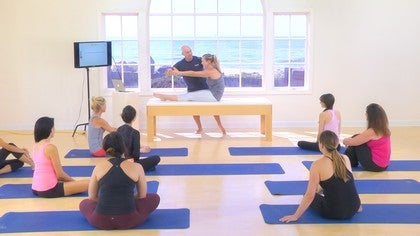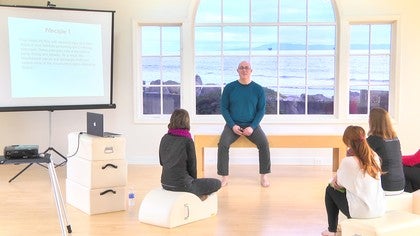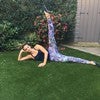Premium workshop
You can view a 2 minute preview. For details, scroll down below the video.
Description
Methodology of Teaching Pilates: Guidelines to Improve Teaching and Deepen Understanding
So many Pilates workshops for teachers are focused on teaching anatomy and the repertoire of the exercises, but don't focus on the methodology of teaching Pilates. In this workshop, Rael Isacowitz brings you ten guidelines that will lead you in your daily teaching of Pilates. Rael's energy and passion will inspire you to grow your thirst for knowledge, believe in Pilates, and set you on the path to being a successful Pilates teacher.
Objectives
-Break down the mechanics of Pilates exercises such as Roll Up, Criss Cross, Side Bend, and Single Leg Kick
-Encourage you to keep your teaching fresh and to foster a student mindset for continuous growth and learning
-Discuss how to protect yourself from teaching burn out, both physically and emotionally
-Help you understand the importance of experience, continuous practice, and keeping your body healthy
So many Pilates workshops for teachers are focused on teaching anatomy and the repertoire of the exercises, but don't focus on the methodology of teaching Pilates. In this workshop, Rael Isacowitz brings you ten guidelines that will lead you in your daily teaching of Pilates. Rael's energy and passion will inspire you to grow your thirst for knowledge, believe in Pilates, and set you on the path to being a successful Pilates teacher.
Objectives
-Break down the mechanics of Pilates exercises such as Roll Up, Criss Cross, Side Bend, and Single Leg Kick
-Encourage you to keep your teaching fresh and to foster a student mindset for continuous growth and learning
-Discuss how to protect yourself from teaching burn out, both physically and emotionally
-Help you understand the importance of experience, continuous practice, and keeping your body healthy
What You'll Need: Mat
About This Video
Workshops: Teaching Methodology
Comments
Skip to Latest
Rael, I think what inspires me most is your dedication and your passion! Again and again I am so moved by the way you bring yourself into this work and your teaching. You have this mixture of being humble on one hand and VERY demanding on the other hand. You are a teacher, (or a teaching student..), I can love and fear at the same time. Thank you for the 10 Guidelines! It is good to be clear about what we want in our work and our life!
10 years ago
Dear Silke, thank you so, so much for your words, they truly touched a deep place within me. You can indeed love and fear at the same time. I was reminded of this 2 days ago snowboarding up at Whistler, Canada in complete whiteout. To love and to fear are part and parcel of my passion for what I do.
10 years ago
Rael, thank you so much for sharing these lessons and guidelines with all of us. As a young student embarking on a lifetime journey of practice embracing and learning to embody a Pilates way of life, and share the gifts that Pilates has to offer with others, each of these lessons resounded with me and spoke loudly to my current experiences, especially when you spoke about the vitality of being an eternal student, humility, and staying connected to the work to our ability to teach and be and offer the best that we can be. I adore your enthusiasm and passion - more than anything, that is inspiring to the utmost degree. Thank you!
10 years ago
Rael, thank you! That was a very helpfull and inspiring workshop. I thing my Polish students will benefit a lot from it. I believe there will be one day I could meet you personally. I love your energy I wish I could give as much energy to my students when teaching  All the best for you
All the best for you
 All the best for you
All the best for you
10 years ago
I really enjoyed this, a lot of fun to watch I have to say and so interesting to hear from your experience. Packed with enthousiasm and passion and so genuine. Thank you!
10 years ago
I found this inspiring and instructive. Crucial info for those of us who are teaching students in and environment with little exposure to the method. Good food for thought!
Thank you.
Thank you.
10 years ago
1-10 of 29
You need to be a subscriber to post a comment.
Please Log In or Create an Account to start your free trial.

































